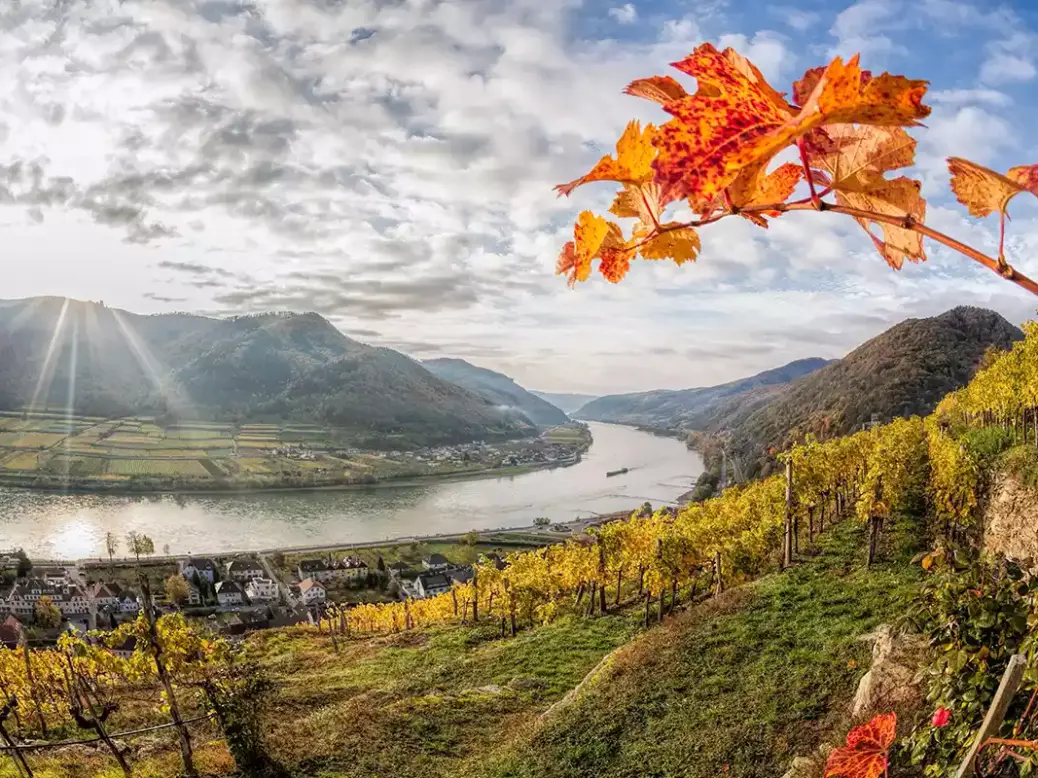
David Schildknecht considers the various methods open to winegrowers confronted by the enormous changes and challenges created by climate change, and finds that many of the lessons learned apply far beyond the vineyard.
Addressing climate disruption is oft conceived by wine growers as rolling back on, or holding the line against, rising must weights, diminishing acidity, and increasingly early harvests. The lesson from recent successes in those endeavors seems to be, The more things change, the more they can stay the same. Altered approaches to vineyard management, harvest strategy, and vinification have proven remarkably efficacious, grape varieties themselves surprisingly resilient, and recent achievements will be significantly augmented by attending to vineyard ecosystems and vine genetics. But the converse holds, too: The less practices in the nursery, vineyard, or cellar change, the more climate change will usher growers into uncharted territory. Change methods to preserve continuity or else brace oneself for inevitable change in wine profile. Prudent growers might do both. The potential of methodological modifications is far from fully explored; the potential for major stylistic disruption correspondingly underappreciated. Exacerbating climatic challenges is enhanced demand for lower alcohol, higher acidity, and savory flavors. Ironically, a warming globe may well be part of what’s driving the appeal of sensory characteristics that it renders harder to achieve; whereas traits that consumers are deemphasizing—fruit ripeness, textural richness, body—could, if desired, be realized more easily than ever. To speak of “staying the same” might thus seem misleading—were not turn-of-the-century stylistic tendencies being increasingly perceived as aberrant excess.
Consider the case of German growers. Even a decade ago, few seemed to grasp that rising alcohol levels threatened the expressiveness, not to mention sheer drinkability, of ostensibly top Riesling bottlings. Today, alcohol consciousness has been raised, top-heavy or overpowering wines are on the wane, and there is a consensus that Germany’s dry Rieslings have reached new levels of distinction. With Riesling Kabinett also experiencing a revival in its homeland, Mosel growers like Julian Haart, Constantin Richter, the Weiser-Künstler duo, and the Webers at Hofgut Falkenstein, or Klaus Peter Keller and Kai Schätzel in Rheinhessen, are scoring aesthetic and commercial triumphs from grapes picked at efficacious acid levels and 1970s or ’80s must weights.
Climate and reestablishing stylistic pedigree
Austria’s Wachau dramatically illustrates excess and adjustment. Thanks to growers at the forefront of late 1980s innovation, this region experienced its first international acclaim. Within a decade, “Grüner Veltliner Smaragd” became associated with wines of richness but then, increasingly, with alcohol levels well over 14%, which too few could integrate. Today, alcohol is increasingly back to pre-1998 levels. For a corresponding phenomenon outside German-speaking lands, consider California Cabernet, which arguably basked in international attention for only two decades before succumbing to jamminess and alcoholic excess. Today, a cadre of producers such as Broc Cellars and Maître de Chai are rightly touting wines as exemplars of pre-1990s Cabernet virtues, while the iconic status of Ridge Vineyards Montebello—which reached as high as 13.7% ABV only twice in 60 years—has never been more secure.
The roster of techniques implicated in such roll-backs and reestablishments of stylistic pedigree is long and diverse. Expunging botrytis was critical in the Wachau. More widely applicable measures are seldom as straightforward. Tight spacing enhances shading and invites lightening fruit loads—a stress-reducer in theory. But competition for water and nutrients is stress-inducing; stress to the point of shutdown brakes sugar accumulation, while many growers conscientiously advocate loosening-up on yields. High canopies and highly selective leaf-pulling conduce to shading; but foliage also drives photosynthesis. Consensus regarding what works and why is only gradually emerging.
Widening the scope of concern to encompass vine genetics, as well as entire vineyard ecosystems, will reveal further means for addressing warming and drought. But for all of the promise offered by adaptive vine genetics, viticultural innovation, and rethinking harvest and vinificatory strategies, there likely comes a time when any given grape variety in a given location is fated to render wines whose style is profoundly and irrevocably marked by climate change. Diana Snowden Seysses of Domaine Dujac believes that, for Pinot Noir in Burgundy, that time has long since come. “I grieve,” she relates, “when I drink Seysses wines like [those of] 1978, my birth vintage. That planet is gone, and no amount of irrigation, canopy management, or whole-bunch vinification will give us another 1978. Change of taste is inevitable.”
That having been said, Snowden is anything but resigned to change without what she refers to as “a fight”—and not merely one in defense of vinous virtues. “Any conversation about adaptation,” she admonishes, “is a missed opportunity to speak about mitigation and meeting Paris Agreement goals.” Her notion of mitigation centers on arresting global temperature increases, toward which goal she has, inter alia, sketched a plan by which vintners in an intensively farmed region like Burgundy’s Côte d’Or could capture and sequester the voluminous CO2 generated by fermentation. Forget wine; maintaining such global perspective is essential for humanity. But global options are arguably those facing wine growers, just writ ominously large: Rely on entrenched practices and court fundamental—in this case, catastrophic—change; or radically modify one’s practices so as to preserve cherished values, realizing “that among these are Life, Liberty and the pursuit of Happiness.” Apropos of which, global political options, too, reflect the plus ça change principle.






